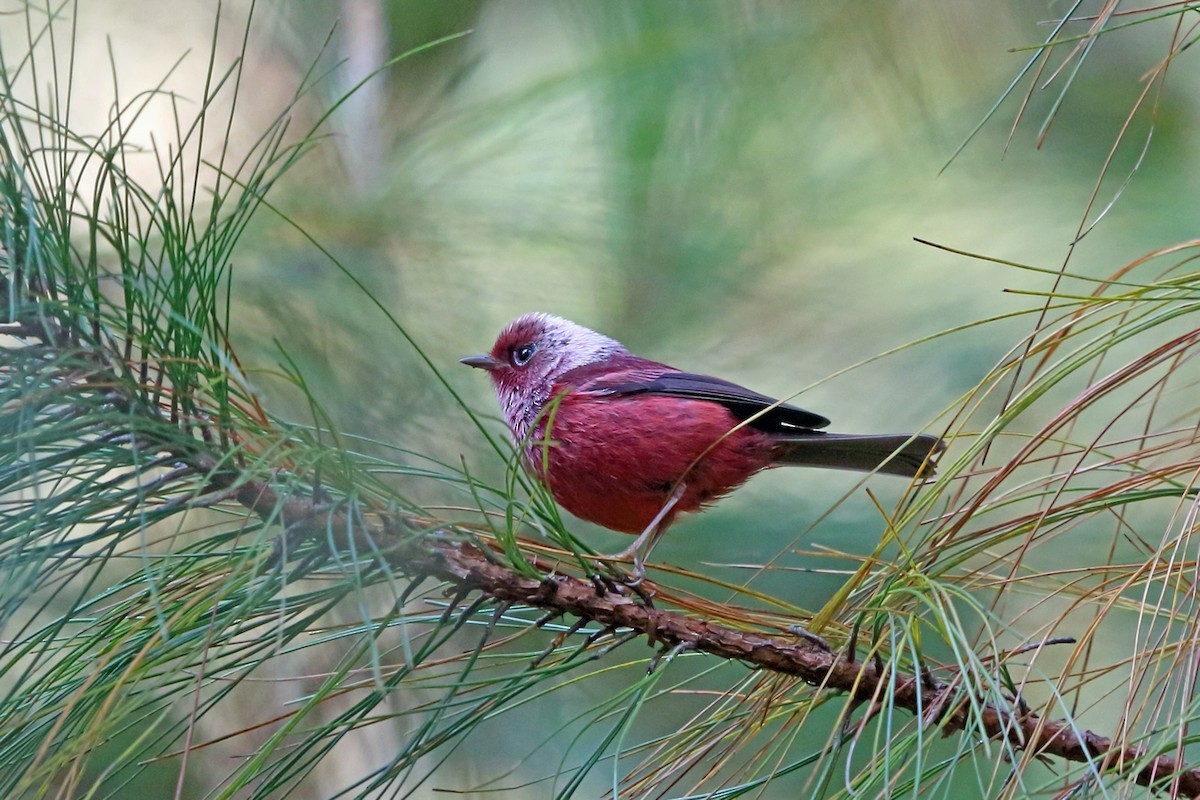Pink-headed Warbler
A species of Red-faced Warblers Scientific name : Cardellina versicolor Genus : Red-faced Warblers
Pink-headed Warbler, A species of Red-faced Warblers
Botanical name: Cardellina versicolor
Genus: Red-faced Warblers
Content
Description General Info
 Photo By Nigel Voaden
Photo By Nigel Voaden Description
The pink-headed warbler measures 12.5–13.5 cm (4.9–5.3 in) in length, and weighs 10 g (0.35 oz). Both sexes have a similar plumage, though females are, on average, slightly duller overall. The adult has dark red upperparts, a silvery-pink chest and pinkish-red underparts. Its head is silvery-pink, with a reddish forehead, dusky lores and dark brown irises. Its bill is blackish, sometimes showing some horn color on the lower mandible, and its legs are flesh-colored. The juvenile is a rich brown with slightly paler underparts. However, that plumage is quickly molted. By late summer, young birds are virtually indistinguishable from adults; only their unossified skulls distinguish them. 
Size
13 cm
Nest Placement
Tree
Feeding Habits
Pink-headed Warbler primarily preys on insects and various invertebrates. Its foraging behavior involves actively searching through foliage. It has no unique dietary adaptations but showcases a preference for certain insects.
Habitat
Pink-headed Warbler typically inhabits mountainous areas characterized by pine-oak and montane evergreen forests. They are found in regions featuring forest edges and secondary vegetation with open canopies and thick underbrush. These birds flourish in environments where the undergrowth is dense enough to support foraging and nesting activities, with their nests often constructed on the ground amidst fallen leaves and low shrubbery. The trees that frequently make up their habitat include various species of oak and pine, contributing to the structural complexity required by pink-headed Warbler for shelter and sustenance.
Dite type
Insectivorous
General Info
Feeding Habits
Bird food type
Behavior
Except when they are feeding fledged young, it is uncommon to find more than two pink-headed warblers together. Mated pairs typically remain together year-round. 
Distribution Area
The pink-headed warbler is endemic to the highlands of central and eastern Chiapas in Mexico, and to western Guatemala. It is a fairly common to common resident of humid to semi-humid pine-oak, pine-evergreen and evergreen forest and edge, at altitudes ranging from 1,800–3,500 m (5,900–11,500 ft) above sea level. It prefers forest with dense, undisturbed understory, but is also found in disturbed forest with damaged understory in its strongholds in Guatemala; this is thought to be suboptimal habitat. Though it is among the species expected to occur in El Salvador, it has not yet been reported there. 
Species Status
Across its range, pink-headed warbler numbers are declining, primarily because the cloud forest upon which it depends is becoming increasingly fragmented. However, the species is currently rated as being of least concern by the International Union for the Conservation of Nature due to its very large range and relatively slow rate of decline. Mexico's government lists it as endangered in that country. In 1898, it was described as being "common on the highlands of central Chiapas". However, in recent years it has become the least common of all wintering and resident warbler species in the highlands of northern Chiapas, based on point counts there. 

 Photo By Nigel Voaden
Photo By Nigel Voaden Scientific Classification
Phylum
Chordates Class
Birds Order
Perching birds Family
New world warblers Genus
Red-faced Warblers Species
Pink-headed Warbler